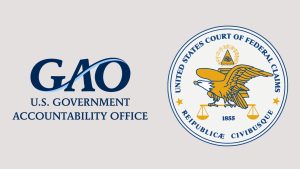 When a government contractor files a bid protest, choosing the right forum can significantly impact the outcome. The Government Accountability Office (GAO) and the U.S. Court of Federal Claims (COFC) are the two primary venues, each with distinct advantages and disadvantages. This post breaks down the key differences to help contractors make an informed decision.
When a government contractor files a bid protest, choosing the right forum can significantly impact the outcome. The Government Accountability Office (GAO) and the U.S. Court of Federal Claims (COFC) are the two primary venues, each with distinct advantages and disadvantages. This post breaks down the key differences to help contractors make an informed decision.
1. Timelines and Filing Deadlines
-
- GAO: Strict filing deadlines apply. Pre-award protests must be filed before proposals are due, while post-award protests generally must be filed within 10 days of contract award or five days after a required debriefing to trigger an automatic stay.
- COFC: No hard deadline for post-award protests. The doctrine of laches applies, meaning delays can bar a protest if deemed unreasonable. Also, delays may affect a protester’s ability to obtain injunctive relief.
2. Automatic Stay vs. Injunction
-
- GAO: Filing a protest within the 10- or five-day window triggers an automatic stay, preventing contract performance while the protest is pending. Agency head may authorize a stay override, but that is unusual and can be challenged at COFC.
- COFC: No automatic stay. Protesters must request a preliminary injunction, requiring them to show irreparable harm, likelihood of success and public interest factors.
3. Decision Maker and Review Process
-
- GAO: Cases are decided by GAO attorneys following an informal, mostly paper-based process.
- COFC: Cases are heard by federal judges with the ability to hold hearings and allow for limited discovery.
4. Jurisdiction and Scope of Review
-
- GAO: Has jurisdiction over most federal contract protests but limited jurisdiction over task order protests (only if civilian task order > $10M or Department of Defense task order > $35M).
- COFC: Broader jurisdiction under the Tucker Act, covering most procurement-related disputes, but generally barred from hearing protests on task orders.
5. Precedent and Legal Flexibility
-
- GAO: Bound by its own prior decisions, leading to predictability but sometimes rigid outcomes.
- COFC: Judges are not bound by previous COFC decisions, allowing for more flexibility in legal interpretation, but still subject to Federal Circuit precedent.
6. Remedies & Agency Compliance
-
- GAO: Issues recommendations, but agencies almost always follow them, even if they are not legally required to do so.
- COFC: Can issue binding injunctions, forcing agencies to comply.
7. Cost Considerations
-
- GAO: Historically thought to be cheaper, but costs can add up due to procedural disputes, supplemental filings, limited record access, and multiple protest rounds.
- COFC: Often perceived as more expensive, but in practice, costs may be lower due to more comprehensive records, fewer procedural hurdles and the ability to argue all issues at once.
Which Forum is Right for You?
Both GAO and COFC have their advantages—the right choice depends on your protest strategy.
1. GAO is best if you want:
-
- A faster decision (GAO must rule within 100 days)
- The benefit of an automatic stay
- A generally lower-cost, informal process
2. COFC is best if you want:
-
- More legal flexibility
- More complex legal issues addressed that may be outside GAO’s traditional scope
- More robust discovery and record access
Need help deciding? Consult Matt Carter to help evaluate your options.
 The Bid Protest Debrief
The Bid Protest Debrief


